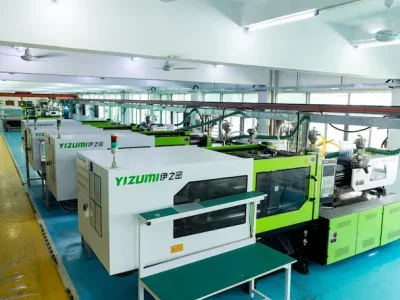Key Considerations When Outsourcing Injection Molding in China

When you think about manufacturing plastic parts at scale, injection molding is often the first process that comes to mind. It’s efficient, repeatable, and capable of producing everything from consumer electronics housings to automotive components. For many companies, the natural next step is to look at China as a potential outsourcing destination. The country has built a reputation for cost efficiency, speed, and sheer production capacity—but those advantages come with their own set of considerations. If you’re exploring injection molding in China, you need to balance opportunity with caution. In this article, you’ll walk through the key factors that determine whether outsourcing is a smart move for your business, and how to avoid the pitfalls that catch so many teams off guard.
Why Choose Injection Molding in China
If you’ve been sourcing parts before, you already know cost is one of the biggest drivers in manufacturing decisions. China remains attractive because of its ability to deliver cost efficiency. Raw material access, lower labor costs, and economies of scale often combine to bring prices down compared to suppliers in the U.S. or Europe.
But price is only part of the story. What really sets China apart is its manufacturing ecosystem. You’re not just dealing with one factory—you’re tapping into a cluster of mold makers, resin suppliers, assembly plants, and logistics networks that are tightly connected. This ecosystem makes it easier to find partners for everything from tooling to surface finishing without having to start from scratch.
Another reason companies look east is production capacity. Whether you need a few thousand parts for pilot runs or millions for mass production, most Chinese suppliers are equipped to scale quickly. That flexibility can make or break a product launch, especially when your timeline is tight.
It’s no surprise, then, that many global companies rely on injection molding in China because of cost savings and manufacturing expertise. The opportunity is clear—but it only pays off if you know how to manage the risks.
Key Considerations Before Outsourcing
Outsourcing isn’t just about picking the lowest bidder—you and I both know that can backfire quickly. If you want your project to succeed, you need to go in with clear expectations and a careful checklist. Here are the factors you can’t afford to overlook:
1. Supplier Qualification & Certifications: Don’t take a supplier’s word for it. Ask for certifications like ISO 9001 or IATF 16949 if you’re in automotive. These standards show that the factory has systems in place for quality and consistency. Without them, you’re gambling on whether the parts you receive will actually meet spec.
2. Communication & Project Management: Time zones and language barriers are real challenges. You want a partner who responds clearly, not someone who disappears for a week. If a supplier can provide regular updates, video calls, and transparent schedules, you’ll save yourself a lot of frustration down the road.
3. Tooling and Mold Design: I’ve seen too many teams rush into production with poorly designed molds, only to spend months fixing issues. Pay attention to tooling—it’s the foundation of your product. A good supplier should offer DFM (Design for Manufacturability) reviews and even mold-flow analysis before cutting steel.
4. Intellectual Property Protection: Let’s be honest—IP concerns are one of the biggest fears when working overseas. Protect yourself with contracts, NDAs, and if possible, register your patents in China. It may feel like extra paperwork now, but it can save you from headaches if someone tries to replicate your design.
5. Lead Times & Logistics: It’s easy to underestimate shipping and customs delays. A quote might say “4 weeks,” but if you add transit, inspections, and possible rework, the real timeline could double. Clarify lead times upfront and discuss logistics options—air for urgent runs, sea for bulk orders. Predictability matters just as much as speed.
Outsourcing to China can absolutely work in your favor, but only if you approach it with eyes wide open. Think of these considerations as your safety net—they’ll help you avoid the traps that catch so many companies off guard.
Advanced Capabilities to Look For
When you’re evaluating suppliers, don’t just stop at whether they can run standard injection molding. The real value often comes from the additional processes they bring to the table. If your supplier can only mold simple parts, you may find yourself limited when your product design evolves.
Many of the stronger manufacturers in China now offer multi-material molding, insert molding, and specialized surface finishes. These capabilities allow you to do more with a single supplier instead of coordinating across multiple vendors. That not only streamlines your supply chain but also reduces the risk of misalignment between different stages of production.
One capability that’s worth highlighting is overmolding injection molding. By molding one material over another, you can integrate soft-touch grips, create better seals, or combine aesthetics with functionality in ways that traditional molding can’t. Think about medical devices with ergonomic handles or consumer electronics with durable, rubberized surfaces—those are often made possible through overmolding.
If you want your parts to stand out in performance and design, pay close attention to whether your supplier can provide these advanced processes. They can be the difference between a basic product and one that truly meets market expectations.
Common Challenges When Outsourcing to China
If you want to avoid costly mistakes, you should be aware of the common challenges companies run into when working with Chinese suppliers.
1. Quality Variability
Not every factory operates at the same level. One supplier may deliver consistent, high-precision parts, while another struggles with tolerances and finishes. You don’t want to discover issues only after thousands of parts arrive at your warehouse. The smarter approach is to start with audits and small pilot runs. That way, you can spot problems early before committing to large orders.
2. Hidden Costs
The quote you receive may not tell the full story. Mold maintenance fees, shipping surcharges, or costs for rework can quickly eat into your budget. I’ve seen projects where the “cheapest” option ended up being the most expensive because of these add-ons. Always push for a detailed breakdown of costs and ask about scenarios that could trigger extra charges.
3. Cultural & Legal Differences
Contracts don’t always carry the same weight in practice as they do in your home country. Misunderstandings over specifications, revisions, or warranty responsibilities are more common than you’d expect. If you don’t set clear terms for dispute resolution and after-sales support, you might find yourself stuck with problems no one wants to claim. Working with partners who understand both Western and Chinese business practices can save you from these frustrations.
These challenges don’t mean you should avoid outsourcing to China. They just mean you need to go in prepared. If you recognize the risks upfront, you’ll be in a stronger position to manage them—and to get the real benefits that outsourcing can deliver.
Best Practices for a Successful Partnership
If you’ve decided to move forward with a supplier in China, the way you manage the relationship will determine whether it’s smooth sailing or constant firefighting. Here’s what I’ve learned works best:
1. Start with a DFM Review
Before you cut steel, insist on a Design for Manufacturability (DFM) review. This step helps catch problems like thin walls, poor draft angles, or undercuts that will complicate molding. Skipping it can cost you months later when parts don’t eject properly or warp in production.
2. Validate with Pilot Runs
Don’t jump straight into high-volume orders. Run a small batch first to see how the supplier handles quality, consistency, and delivery. A pilot run is like a stress test—it shows you how reliable they really are before you commit big money.
3. Lock Down Contracts and IP Terms
Be crystal clear about intellectual property and quality standards in your contracts. Spell out who owns the mold, how revisions will be handled, and what happens if parts fail inspection. I’ve seen too many companies assume “it’s understood” and end up in disputes. Don’t leave it to chance.
4. Build Continuous Improvement into the Relationship
Think beyond the first shipment. The best partnerships grow stronger over time, with feedback loops that reduce scrap, improve cycle times, and refine processes. If you treat your supplier as a long-term partner rather than a one-off vendor, you’ll get better performance and stronger support.
The truth is, outsourcing doesn’t have to feel like a gamble. With the right practices in place, you can build a partnership that delivers consistent quality and supports your growth.
Conclusion
Outsourcing injection molding to China can be a smart move, but only if you approach it with the right mindset. Cost and capacity are major advantages, yet they’re not enough on their own. The real difference comes from choosing suppliers who not only meet your price targets but also prove their reliability through certifications, strong communication, and transparent project management.
Don’t overlook advanced processes either. Capabilities like overmolding injection molding can help you create parts that stand out in both performance and design. If your supplier can deliver these value-added services, you gain a competitive edge that goes beyond simple cost savings.
At the end of the day, you should treat your manufacturing partner as more than just a vendor. Think of them as a strategic ally in your product development journey. When you build relationships based on trust, technical expertise, and long-term collaboration, outsourcing isn’t just about reducing expenses—it becomes a way to strengthen your business and position yourself for growth.




